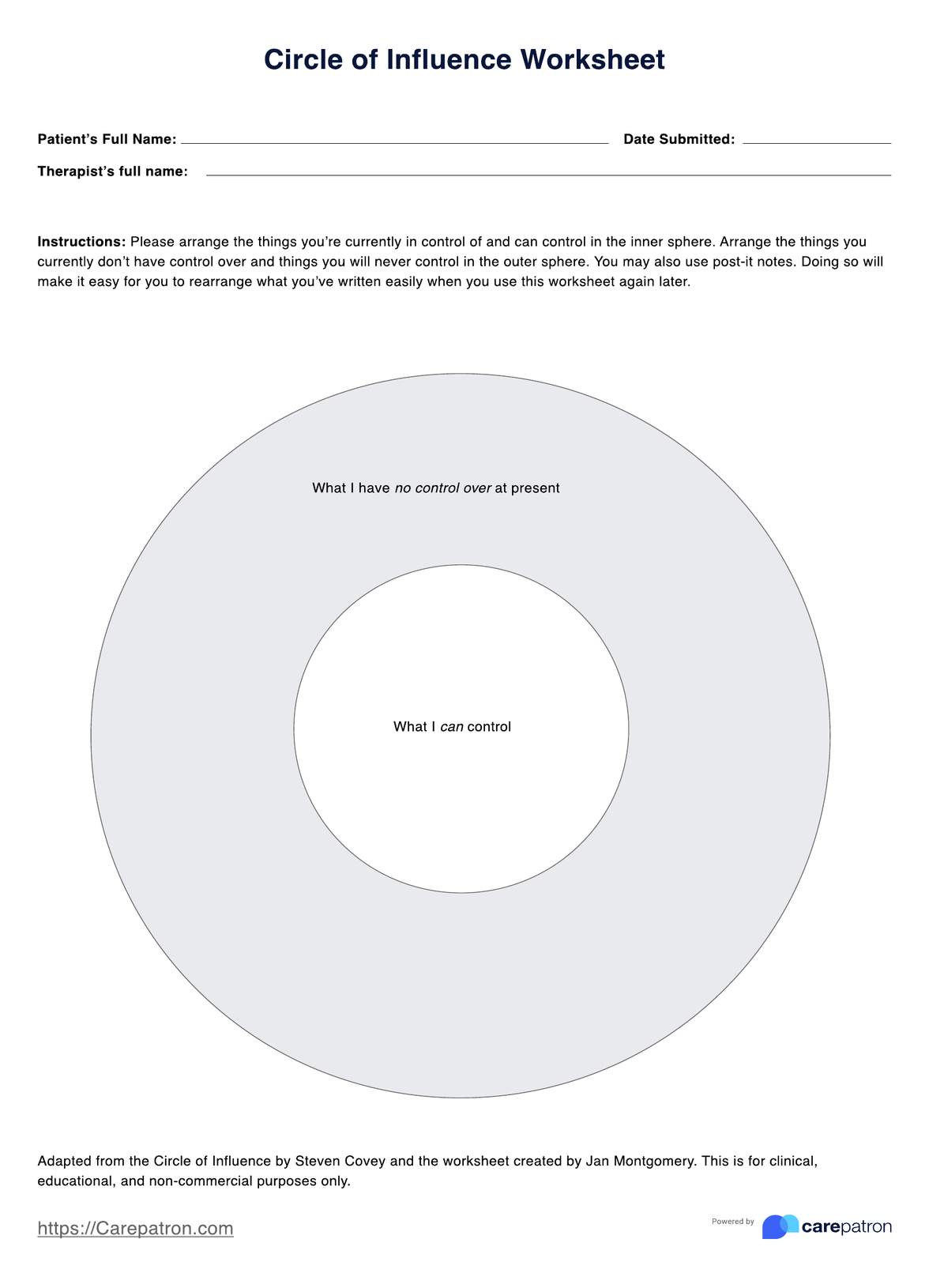You can definitely engage with the PDF file if you want. There are editable fields, even in the actual Circle of Influence part. But we recommend printing it because the editable fields of the Circle of Influence page can only contain so much text.

Circle of Influence Worksheet
Help your patient work through their anxieties, worries, and stress by having them engage with the Circle of Influence Worksheet! Learn more about this nifty tool through this short guide.
Circle of Influence Worksheet Template
Commonly asked questions
Steven Covey did. He introduced it in his book The 7 Habits of Highly Effective People.
Of course. Feel free to use it. If you believe it’ll benefit you, then by all means, download a copy. Though, please note that this should not be used as a substitute for therapy. If you are being bombarded by your worries and your anxiety/stress is significantly affecting your life, please enroll yourself in a therapy program to get professional help.
EHR and practice management software
Get started for free
*No credit card required
Free
$0/usd
Unlimited clients
Telehealth
1GB of storage
Client portal text
Automated billing and online payments











